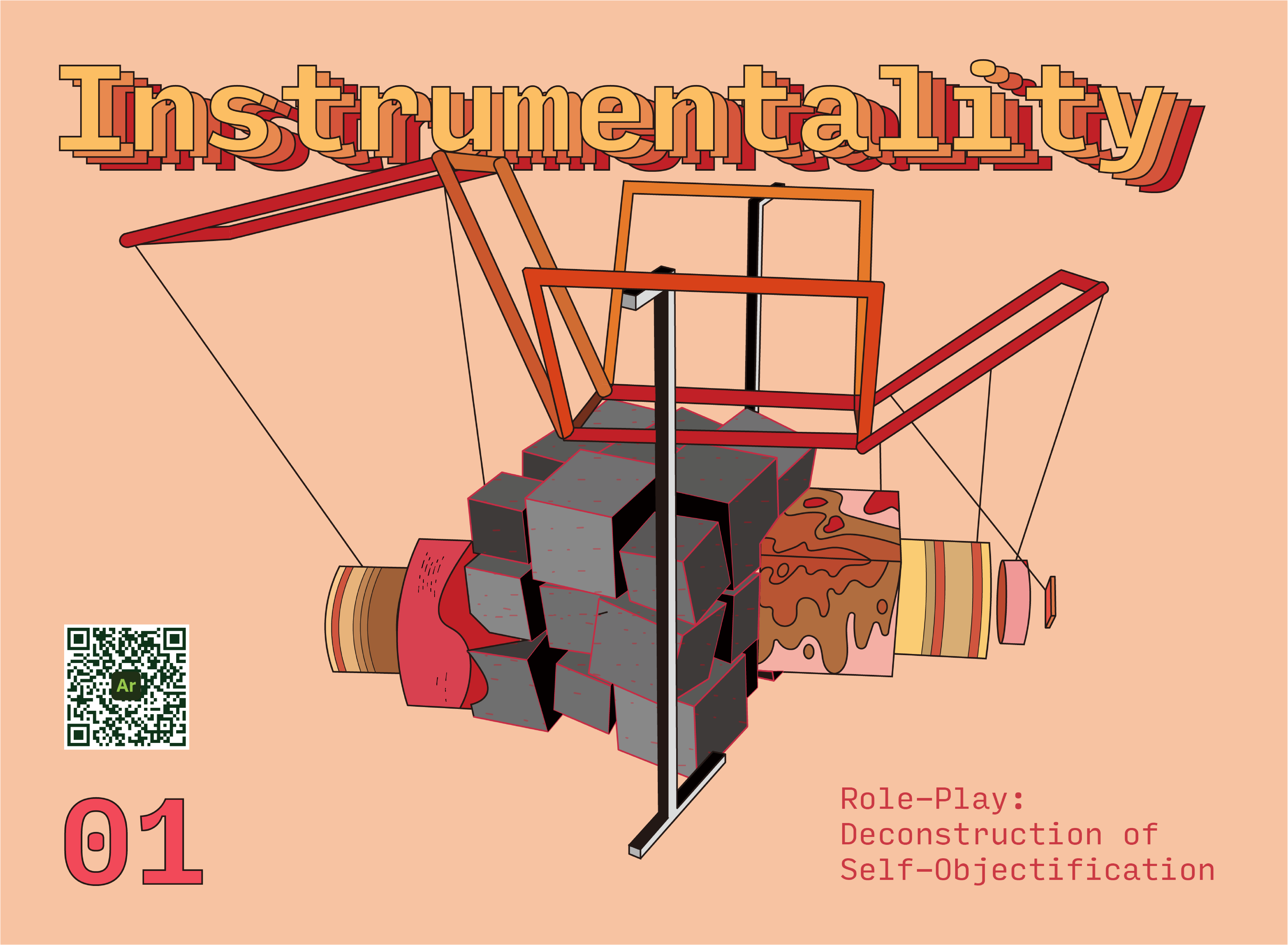Role-Play: Deconstruction of Self-Objectification
Xingzhi Shi
Role-playing is the act of imitating the behavior, appearance, and characteristics of a particular person or class of people. The process of imitation involves selecting a subject, analyzing and generalizing information about them, and reproducing characteristics. Role-players often use their chosen roles to meet social and cultural expectations or to gain higher positions in society, so in most cases, imitated roles and their traits are biased (intentionally or unintentionally) toward socially desirable roles or idealized behavioral patterns and appearances. However, this action also implies an objectification of oneself, a compromise or even a sacrifice of one’s identifying characteristics.
My thesis will discuss how the adoption of socially and culturally recognized symbols can lead to self-objectification and how design can be used to deconstruct self-objectification in a real-world context and investigate alternate and creative ways of expressing our identities. I will analyze the three most important qualities of self-objectification, deconstruct them, and reinterpret them in a personalized and visual way to regain a sense of self. I take it as a way to de-objectify and get closer to one’s true feelings and to convey to the audience a creative visual way of deconstructing self-objectification.
Instrumentality
Instrumentalization is to treat oneself as a tool, to diminish one's own feelings, to put all the emphasis on what one can do, to be a humanoid production machine that accomplishes tasks. I summarize the characteristics of Instrumentality into four parts: hollowness, passivity, self-Torment, and rigidity.
Appearance
The second characteristic of self-objectification is a tendency to reduce one’s value to appearance. If instrumentality in role-playing is putting all the value on what one can do and what benefits one can achieve for others, “reducing to appearance” is putting all the value on one’s appearance, for instance using one’s appearance as a decorative tool. For the qualities associated with Appearance, I focused on the following: decoration, shame, anxiety, and comparison.
Silencing
Being silenced fosters a sense of powerlessness and oppression. Negatively confronted and passively receiving external commands. Internalizing the outside world’s denial of our dignity and status as human beings. I deconstruct silencing as fear, pressure, depression, and invisibility.
Fungibility
Two other subsidiaries, but closely related, qualities are fungibility and violability, which are designed similarly as above. Fungibility implies exchangeability. When we perceive ourselves as commodities and tools, we can be easily replaced by others with similar characteristics. We are eager to become a tool, but the authority to evaluate how good a tool is is not in our hands, and there will be a steady stream of people who can replace us.
Violability
Violability refers to being fragile to attack. When playing an idealized, symbolic role, we give up initiative while relying too much on external rules and demands. The constant references to sadness and self-aggression in the other traits I described above actually echo violability.
Instrumentality AR code
AR experience of model Instrumentality
Appearance AR code
AR experience of model Appearance